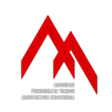Butaro Hospital, a Sustainable Hospital with Participatory Design and Construction Process
DOI:
https://doi.org/10.21776/ub.ruas.2016.014.01.5Abstract
Healthcare facilities are very important for sustainable rural regions in developing countries. The Republic of Rwanda, in central east Africa, suffered massive social conflict in 1994 between the Hutu and Tutsi. Furthermore the health problem happened in Burera District because of lack of a proper district hospital. Therefore, in January 2011, the Rwandan Ministry of Health and Partners in Health (PIH) opened the 140-bed Butaro Hospital in the Burera District of Rwanda. The paper-based research was conducted based on hospital’s architecture of Hatmoko, et.al. (2010). Analysis was made with based on the secondary data of Butaro Hospital. Lastly, primary data gathering would be conducted if the funding allowed. The Butaro Hospital was an affordable solution for healthcare problems in rural regions of the developing countries, especially the infectious diseases (such as: HIV, malaria, tuberculosis, nose-ear-and-throat disease). Sustainable innovative solutions for minimum infection were implemented such as: external corridors, large-radius-low-speed fans (with diameters of 24 feet), high-louvered windows, germicidal UV lights, and non-permeable-continuous flooring. The construction of the hospital also would reduce the impact of political crisis in 1994. The project created 4,000 jobs for local craftsmen and local residents. They were initially trained for manual excavation, construction, and project management, before involving in the hospital construction. Therefore, the Butaro Hospital supported the smart regions of Burera area.
Keywords: Sustainable and affordable hospital, participatory design, local materialDownloads
Published
How to Cite
Issue
Section
License
Authors who publish with this journal agree to the following terms:
- Authors retain copyright and grant the journal right of first publication with the work simultaneously licensed under a Creative Commons Attribution License that allows others to share the work with an acknowledgement of the work's authorship and initial publication in this journal.
- Authors are able to enter into separate, additional contractual arrangements for the non-exclusive distribution of the journal's published version of the work (e.g., post it to an institutional repository or publish it in a book), with an acknowledgement of its initial publication in this journal.
- Authors are permitted and encouraged to post their work online (e.g., in institutional repositories or on their website) prior to and during the submission process, as it can lead to productive exchanges, as well as earlier and greater citation of published work (See The Effect of Open Access).











